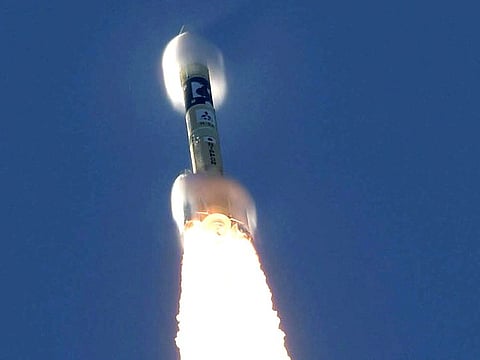Mars Hope Probe: UAE’s journey of hope
With the historic Mars mission we have set the bar higher than ever

“Life is hope, and whoever lost hope lost life,” that’s how the ancient Greek philosopher Plato described the most important pillar of life 2300 years ago.
With the hope of unifying Emirati people, Sheikh Zayed bin Sultan Al Nahyan established the UAE 50 years ago. Its modus operandi was clear right from the start — working hard in the hope for a better tomorrow and with unflinching belief that nothing is impossible.
At first, it was the far-fetched dream of cultivating the desert, and through the efforts of the country’s late founding father and the vision of our wise leadership, the green area in the UAE now spans over 1,000 sq km and keeps expanding.
Spreading hope and inspiration and turning challenges into opportunities have always been among the priorities for the UAE leadership that doesn’t have the word ‘impossible’ in its dictionary. As the Hope Probe makes its way to Mars, we have set the bar higher than ever.

We had the hope to build a nation with a robust economy, and the UAE has gradually evolved into a regional financial hub with a diversified economy as well as a leader in the transition to a green economy.
Back in the 1970s, Sheikh Zayed had an ambitious hope of launching a space program. Four decades later, here we are — we established the Mohammed Bin Rashid Space Centre (MBRSC) and the UAE Space Agency, we developed the National Space Programme, and we proudly sent the first Emirati astronaut into space.
First Arab interplanetary mission
Now, with the first Arab interplanetary mission heading to the Red Planet, the UAE is motivating a whole new generation of Arab youth to pursue space science and contribute to pushing boundaries on space exploration.
In addition to being a source of inspiration, the Hope Probe will bring a wide host of benefits, including supporting environmental sustainability here on Earth.
The orbiter is equipped with three types of sensors for mapping the complex make-up of Mars’s atmosphere. These include a high-resolution multiband camera for monitoring dust and ozone, an infrared spectrometer for determining the composition of the planet’s lower atmosphere, and an ultraviolet spectrometer for measuring oxygen and hydrogen levels.
Given that Mars and Earth are planetary siblings, the data we gather about the Red Planet will help us better understand climate dynamics and expedite our action towards a climate-safe world.
Exploring Mars
We will also study the mechanisms that have driven oxygen and hydrogen out of Mars’s atmosphere, resulting in forming the lifeless, cold desert landscape for which the planet is known today.
Scrutinising the data will enable us to identify the best technology-based solutions that we can leverage to avoid the same fate. The findings will inform how we proceed to mitigate the impacts of climate change, sustain biodiversity, and preserve our precious natural resources.
In addition to the colossal advantages that the Mission will deliver on multiple fronts, it will foster youth empowerment and involvement in shaping a better future — a strategic objective that the UAE has always upheld, as categorising and analysing the data collected by the orbiter will be entrusted to a team of young professionals.
The Mission will lay the foundation for a more robust scientific research ecosystem in our country that will pave the way for a new generation of young space scientists, who can devise out-of-this-world solutions to environmental concerns and effectively protect the future of our planet.
Spreading hope and inspiration and turning challenges into opportunities have always been among the priorities for the UAE leadership that doesn’t have the word ‘impossible’ in its dictionary. As the Hope Probe makes its way to Mars, we have set the bar higher than ever.
Dr Abdullah Belhaif Al Nuaimi is the UAE Minister of Climate Change and Environment
Sign up for the Daily Briefing
Get the latest news and updates straight to your inbox






